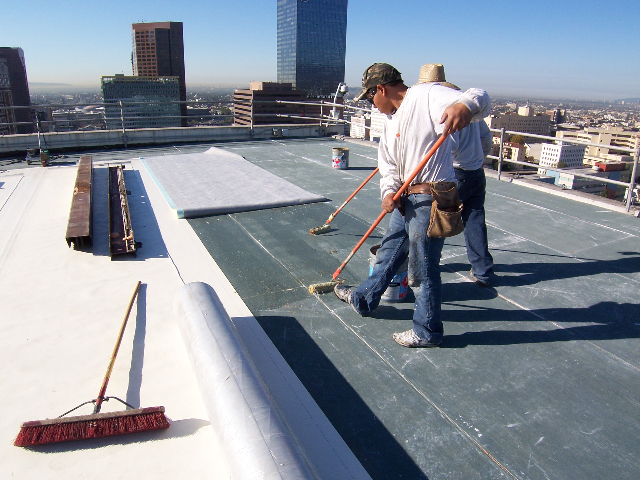In terms of the protection and stability of your home, your roof plays a crucial role. Realizing how long your roofing system endures and being aware of the signs for replacement can save you from expensive fixes and future issues to your home. Many homeowners regularly question how long they can truly expect their roof to last, and the timeframe can change significantly depending on several factors, including the roofing material, regional weather, and how well it’s maintained. In https://mckinney-santana-3.federatedjournals.com/the-advantages-of-regular-roof-care-programs , we will examine the typical durations of different roofing materials, signals suggesting roof replacement, and important care tips to prolong its durability.
Whether you’re planning for a roof replacement, carrying out regular checks, or managing the aftermath of extreme weather, possessing accurate knowledge is crucial. In this article, we will take you through the process of roof installation and replacement, examine the benefits and drawbacks of various roofing options, and provide insights on hiring a professional versus tackling repairs on your own. By he said with knowledge about the lifespan and care requirements of your roof, you can maintain your home’s safety and integrity for the long term.
Understanding Rooftop Longevity
The span of a ceiling varies considerably based on the material used, the assembly standard, and the care received over the years. For example, asphalt shingles generally endure around twenty to thirty years, while aluminum roofs can exceed five decades years with adequate care. Understanding these variations is important for property owners who want to make informed decisions about their roof options.
Aspects such as weather, atmospheric conditions, and local surrounding conditions also hold a critical role in determining how extended a top will last. Locations vulnerable to harsh meteorological phenomena, such as intense snowfall, hurricanes, or intense heat, can experience reduced longevity due to the heightened stress on roofing materials. Routine maintenance and swift repairs can greatly extend a roof's longevity, making it essential for homeowners to remain alert about potential concerns.

Ultimately, the selection of ceiling material not only influences longevity but also upkeep necessities and cost considerations. Householders should evaluate the advantages and disadvantages of various roofing materials, from conventional asphalt to modern eco-friendly options, when choosing the optimal choice for their homes. By understanding these aspects, property owners can improve their ability to prepare for roof renewal and guarantee they pick a roofing solution that fulfills their demands over time.
Signs You Need a New Roof
One of the key indicators that you may need a new roof is the age of your current roofing material. Most asphalt shingles have a lifespan of around 20 to 25 years, while metal and tile roofs can last longer, sometimes upwards of 50 years or more. Should your roof be nearing or surpassing its expected lifespan, it’s prudent to contemplate a replacement before major problems occur. Frequent inspections can assist in evaluating the state of the roof and deciding whether a replacement is needed.
A further indicator to watch for is evident damage or decay. This can manifest as missing shingles, curling edges, or bald spots where granules have worn away. Additionally, check for sagging areas, which may indicate structural damage beneath the surface. Water stains on your ceiling or walls can signal a leak, indicating that your roof is no longer effectively protecting your home. If you notice these issues, it’s essential to consult with a roofing professional to evaluate the extent of the damage.
Finally, discovering granules from your shingles piling up in your gutters or downspouts signals deterioration. This loss of granules reduces the roof's ability to protect against UV rays and weather, ultimately leading to a shorter lifespan. Another alarming sign is the appearance of mold or moss growth, which can hold moisture against the roof and hasten decay. Timely action on these issues can aid in determining if it’s time for a new roof, ensuring the continued safety and integrity of your dwelling.
Roofing Substitution Fundamentals
Deciding to substitute your roofing is a major decision that requires thorough consideration. Homeowners should begin by evaluating the current state of their roofing and figuring out how much life is left in it. Regular inspections can help detect problems like water intrusion or broken tiles, which may indicate it’s necessary for a replacement roof. Moreover, understanding various roofing materials and their respective lifespans, maintenance needs, and costs can assist property owners in arriving at an informed choice.
The procedure of roof substitution involves several essential phases. Firstly, it’s essential to select the appropriate roof option that suits your home’s style and climate. This involves weighing the pros and disadvantages of choices like asphalt tiles, steel roofing, and tile tiles. Once the option is decided, hiring a skilled roof contractor is vital. A reputable contractor will perform a comprehensive evaluation, provide a detailed estimate, and make sure the installation is carried out correctly, minimizing subsequent issues.
After setup, regular upkeep is essential to prolong the lifespan of your new roof. Homeowners should schedule regular checkups, remove debris, and address any fixes promptly to prevent minor issues from growing. Being in roof care not only safeguards your investment but also enhances your property's total worth and safeguards against severe weather situations, making it a sound investment for an extended period to follow.
